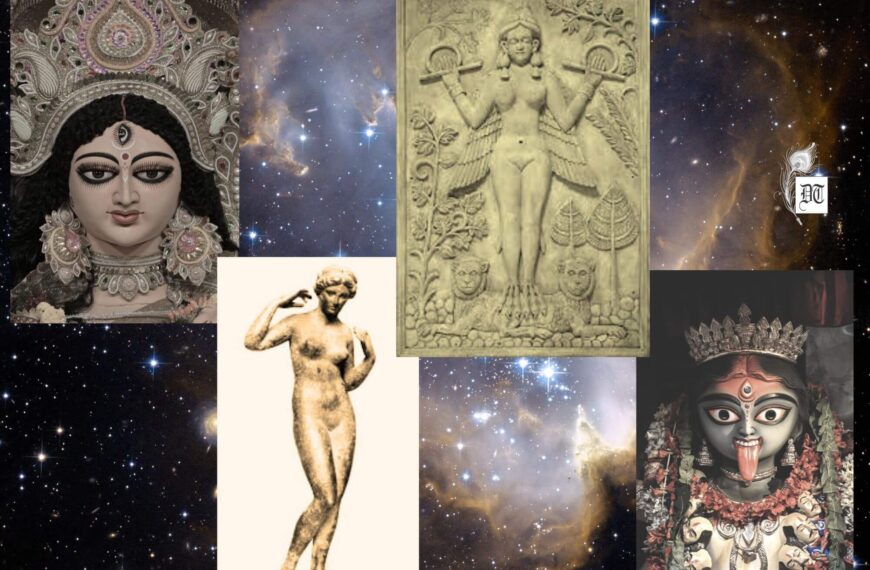Monika discusses that Kashmir, a “Paradise on Earth,” is a land rich in spirituality and myth, where ancient sages have left their mark, exclusively for Different Truths.

Kashmir, the “Paradise on Earth,” has long held an enigmatic allure that surmounts its breathtaking beauty. This land of serene lakes, snow-capped mountains, and verdant valleys is more than a tourist’s delight. It has historically been a cradle of spirituality, myth, and cultural exchange. Ancient sages, religious teachers, poets, and artists have been drawn to Kashmir not only for its physical beauty but also for its spiritual energy, timeless wisdom, and cultural richness. Legends even tell of divine beings visiting, residing, or meditating in this land, making Kashmir a profound confluence of faiths and philosophies.
Kashmir’s Spiritual and Mythological Blend
In ancient scriptures, Kashmir is often referred to as the land where gods treaded softly. The very origins of its name, “Kashyap-Maer,” trace back to the sage Kashyapa, an ancient rishi who, according to legend, reclaimed the land from a massive lake and made it inhabitable. Kashyapa’s myth has since merged with Kashmiri identity, symbolizing transformation, resilience, and divinity. Over centuries, this land, blessed by sages, became home to a unique blend of religious influences, from the Vedic traditions and Buddhism to later Islamic Sufism.
Kashmir and Hinduism: The Sacred Abode of Shiva
Kashmir holds special reverence in Hindu mythology, particularly as a domain of Lord Shiva. The region is dotted with temples and shrines dedicated to Shiva, with the Amarnath Cave standing as one of the holiest pilgrimage sites. It is believed that Shiva, in his eternal quest for solitude and transcendence, chose the Amarnath Cave as his abode. Here, he supposedly shared the secrets of life and immortality with his consort, Parvati. This act, according to legend, rendered the place sacred, attracting countless pilgrims even today who seek spiritual enlightenment and connection with the divine.
Additionally, the mystical connection between Shiva and Kashmir gave rise to Shaivism. A philosophy that emphasizes the unity of individual consciousness with universal consciousness. Known as Trika Shaivism or Kashmir Shaivism, this tradition found fertile ground in Kashmir, producing some of the most profound theological texts and influencing thinkers across generations. The philosophy encouraged meditation and self-awareness, values that resonated with the peaceful surroundings and the meditative landscapes of the region.
The Rise of Buddhism in Kashmir: A Sanctuary for Enlightenment
Kashmir’s tranquil environment also appealed to Buddhism, as the valley became an important center for the spread of Buddhist teachings. After the Third Buddhist Council in the 3rd century BCE, missionaries traveled to Kashmir to spread the teachings of the Buddha. The region saw the rise of several monasteries and universities, and it became a critical hub for Buddhist scholarship, preserving and transmitting texts that would influence Buddhist traditions in Central Asia, China, and Tibet.
It is even said that after Buddha’s earthly departure, his disciples established monasteries in Kashmir to continue his legacy. The Buddhist traditions that developed here blended seamlessly with the local philosophies, fostering a unique blend of meditative practices and compassionate living.
Among the figures believed to have graced Kashmir is Padmasambhava, the great Buddhist master, who passed through the region on his journey to Tibet. His teachings influenced generations of monks and scholars, fostering a deep-seated reverence for enlightenment and compassion. In essence, Kashmir became a sanctuary of peace, drawing seekers of spiritual truths to its remote monasteries and meditation caves.
The Arrival of Jesus in Kashmir: The Lost Years and Legends
One of the most intriguing narratives that bind Kashmir to global spirituality is the legend of Jesus Christ’s connection to the valley. Some scholars and religious traditions suggest that during his “lost years”. The period of Jesus’s life unrecorded in the Gospels; he traveled to India, where he studied and engaged with yogis, sages, and Buddhist teachers. According to certain sources, Jesus spent time in Kashmir, learning from local masters and imbibing the spiritual richness of the land.
Further legends suggest that Jesus returned to Kashmir after the crucifixion, seeking refuge and a peaceful life away from political turmoil. There, it is said, he spent his last years, attaining samadhi in the land that had nurtured so many divine figures. Though debated, these legends indicate the deep resonance that Kashmir’s spiritual climate held for those in search of eternal truths.
Cultural Flourishing: The Confluence of Knowledge and Art
Kashmir was not only a center for spirituality but also a flourishing hub for knowledge, art, and culture. The valley attracted scholars from various parts of India and beyond, contributing to its intellectual and cultural richness. The ancient Sarvastivada school of Buddhism flourished here, as did the Sharda script, which became a cornerstone for classical scholarship. During the medieval period, Kashmir housed many learning centers that nurtured scholars, poets, and artists, contributing to the literary and cultural landscape of the Indian subcontinent.
One of the most profound texts to emerge from Kashmir was the “Rajatarangini,” an epic written by Kalhana in the 12th century that documents the history of Kashmir’s kings. The Rajatarangini is one of the earliest historical records in Sanskrit literature, bridging mythology with historical documentation, giving the world a glimpse of the cultural evolution of the valley.
Kashmiri art and handicrafts also bloomed, producing the intricate pashmina shawls, papier-mâché, wood carvings, and carpets that remain timeless symbols of the valley’s artistry. Kashmiri culture became a living embodiment of peace, grace, and elegance, characteristics that mirrored the landscape itself.
The Sufi Influence: Harmony and Love
With the arrival of Islam in Kashmir, the valley experienced a synthesis of Sufi teachings with local spiritual practices. The Sufi saints, known as “rishis” in Kashmir, emphasized harmony, compassion, and love for all beings. They encouraged people to transcend religious boundaries, focusing instead on the unity of humanity and a connection to the Divine. Figures like Sheikh Noor-ud-din Wali, the beloved patron saint of Kashmir, helped create an ethos of tolerance and unity among Kashmir’s diverse communities.
The Sufi traditions in Kashmir embody the concept of “Ishq” or divine love, which resonated deeply with the valley’s spiritual heritage. Sufi shrines became places of peace, where people from different religions prayed side by side, celebrating Kashmir’s pluralistic identity. The Sufi-Rishi movement in Kashmir left a lasting legacy, fostering an inclusive spiritual environment that encouraged unity and coexistence.
A Timeless Land of Divine Presence
Kashmir’s spiritual resonance has always attracted seekers and teachers. Legends connect it to both mythological and historical figures, from Lord Shiva and Buddha to Jesus and revered Sufi saints. Each brought their teachings, philosophies, and reverence for Kashmir, recognizing it as a unique space where divinity seemed closer, more tangible.
For the modern visitor, Kashmir still exudes that divine presence, perhaps through the silence of its mountain peaks, the flow of the Jhelum River, or the mysterious aura that lingers over Dal Lake. In many ways, Kashmir is an eternal meditation. A place where the divine seeks to commune with humanity, where myths breathe, and spirituality endures in every snowflake and cedar tree.
As we reflect on Kashmir’s past, we see more than a beautiful landscape; we see a living proof to humanity’s ancient search for truth, compassion, and unity. Kashmir remains a sanctuary of the soul, a timeless pilgrimage for all who seek a touch of the divine in their journey through life.
Picture design by Anumita Roy






 By
By
 By
By

 By
By
Thank you for covering Kashmir’s multi-faceted richness in flowing prose without any sand between the words. The part about Jesus in Kahsmir has been dealt with rational sensitivity and respect: thank you.